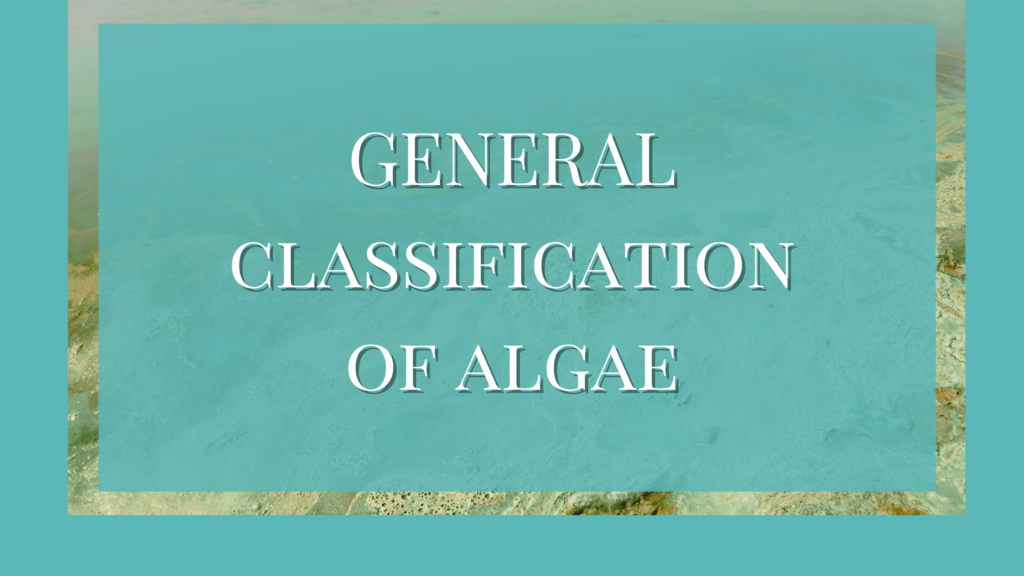Algae are a group of photosynthetic organisms that are included in the kingdom Protista. They can be found in various habitats, including freshwater, marine environments, and even on land.
The evolution of algae is a fascinating journey that spans billions of years. The evolution of algae is intertwined with the history of life on Earth, and it has played a crucial role in shaping our planet’s ecosystems.
The early algae were simple and single-celled organisms like bacteria and similar to Cyanobacteria or Blue Green Algae. They were autotrophs who performed photosynthesis. Over the period, they diversified and evolved into more complex forms where some formed colonies while others developed into multicellular bodies.
Timeline of Evolution of Algae
During the evolutionary process of algae, the prokaryotic cells underwent gradual changes from mesokaryotic cells to eukaryotic conditions followed by the appearance of chlorophyll b.
These multicellular forms showed variations in structural and morphological adaptations, that helped them cope with their ecosystems.
During the Paleozoic Era, algae underwent further changes to evolve complex multicellular algae like seaweeds. Seaweeds had specialized structures called holdfasts for anchoring, stipes for support, and leaf-like blades that helped them with photosynthesis.
Now, algae are classified into several groups based on their pigments, cell structure, and reproductive mechanisms. These groups include green algae (Chlorophyta), red algae (Rhodophyta), brown algae or Phaeophyta, and diatoms (Bacillariophyta), among others.
Various Algal Divisions
Moreover, the algal divisions with characteristic biliproteins like Cyanophyta, Cryptophyta, and Rhodophyta deviated and developed separately.
- The other divisions of algae that lacked biliproteins evolved through the mesokaryotic Dinophyta which later gave rise to fucoxanthin-containing forms.
- The diploid Phaeophyta having lateral flagella and Chrysophyta with an apical flagella are examples.
- Later Bacillariophyta evolved from the Chrysophyta groups through a blind line of evolution.
- Chrysophyta members that lost the fucoxanthin gradually developed chlorophyll-e and eventually developed Xanthophyta.
- The similarities in the vegetative organization of members of Chrysophyta, Xanthophyta, and Chlorophyta show that they all have a common ancestry.
- Moreover, Chlorophyta when developed chlorophyll-b formed Euglenophyta on one side and Charophyta on the other through Coleochaete (Stewart & Mattox, 1975).
Nuclear Evolution of Algae
The evolution of the nuclear envelope from prokaryotic to eukaryotic development happened gradually from a thallus-like structure in BGA to a more complex structure in Dinophyta.
This happened through a gradual restriction of nucleo-cytoplasmic interchange (Dodge & Crawford, 1969). It eventually ended up with the development of a nuclear membrane formation that controls the nucleo-cytoplasmic interchanges.
- When the size of the algae increased so did the amount of DNA inside the cells.
- The DNA eventually was packed in specific bodies called chromosomes but devoid of histones as in Dinophyta and later into a full-fledged eukaryotic nucleus.
- Similarly, the other membrane-bound organelles such as mitochondria, chloroplasts, dictyosomes, etc. were developed from the invagination of the plasma membrane.
- This was evident from the fact that the eukaryotic ribosomes in chloroplasts and mitochondria show similarity to prokaryotic ribosomes in their sedimentation coefficient.
It is also believed that all the eukaryotic organelles such as mitochondria, plastids, chloroplast, etc., evolved gradually from prokaryotic individuals through progressive transformation.
Role of Endosymbiosis in the Evolution of Algae
Various research indicates that the acquisition of photosynthesis by the algae evolved from the endosymbiotic relationship between early eukaryotes. The evolution of algae and the plastids in them happened almost simultaneously.
- The primary plastids evolved into the most advanced form through the process of secondary endosymbiosis.
- Here, a heterotrophic algae incorporates an autotrophic algae having a primary plastid in it, to form an endosymbiotic association.
- With the help of this newly acquired primary plastid, the heterotrophic algae can reap the benefits of photosynthesis inside its cells. This is called secondary endosymbiosis.
- Giant kelp, diatoms, and bloom-producing haptophytes are examples of algae that have a common evolution due to such endosymbiosis.
- The secondary endosymbiosis gave way to tertiary endosymbiosis which eventually led to the evolution of algae having an independent capacity to perform photosynthesis.
- Latest studies in algal genomics also support the evolution of algae through this association.
References
- Archibald, J. M. (2012, January 1). The Evolution of Algae by Secondary and Tertiary Endosymbiosis. Advances in Botanical Research. https://doi.org/10.1016/b978-0-12-391499-6.00003-7
- Khan AK, Kausar H, Jaferi SS, Drouet S, Hano C, Abbasi BH, Anjum S. An Insight into the Algal Evolution and Genomics. Biomolecules. 2020 Nov 6;10(11):1524. doi: 10.3390/biom10111524.
Additional Reading
- History of Phycology
- Classification of Algae
- Different Classifications of Algae
- Interrelationships and Phylogeny of Algae




